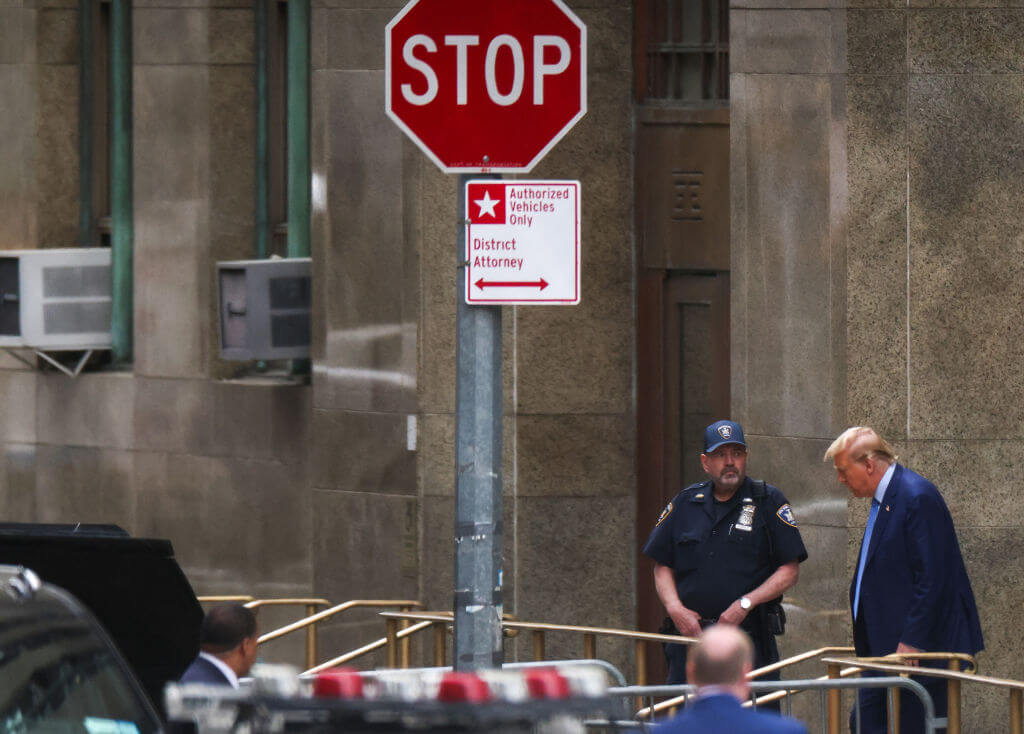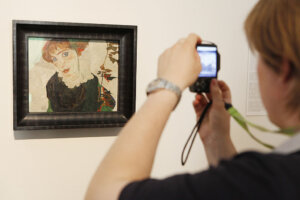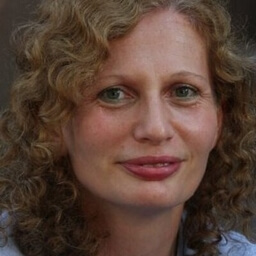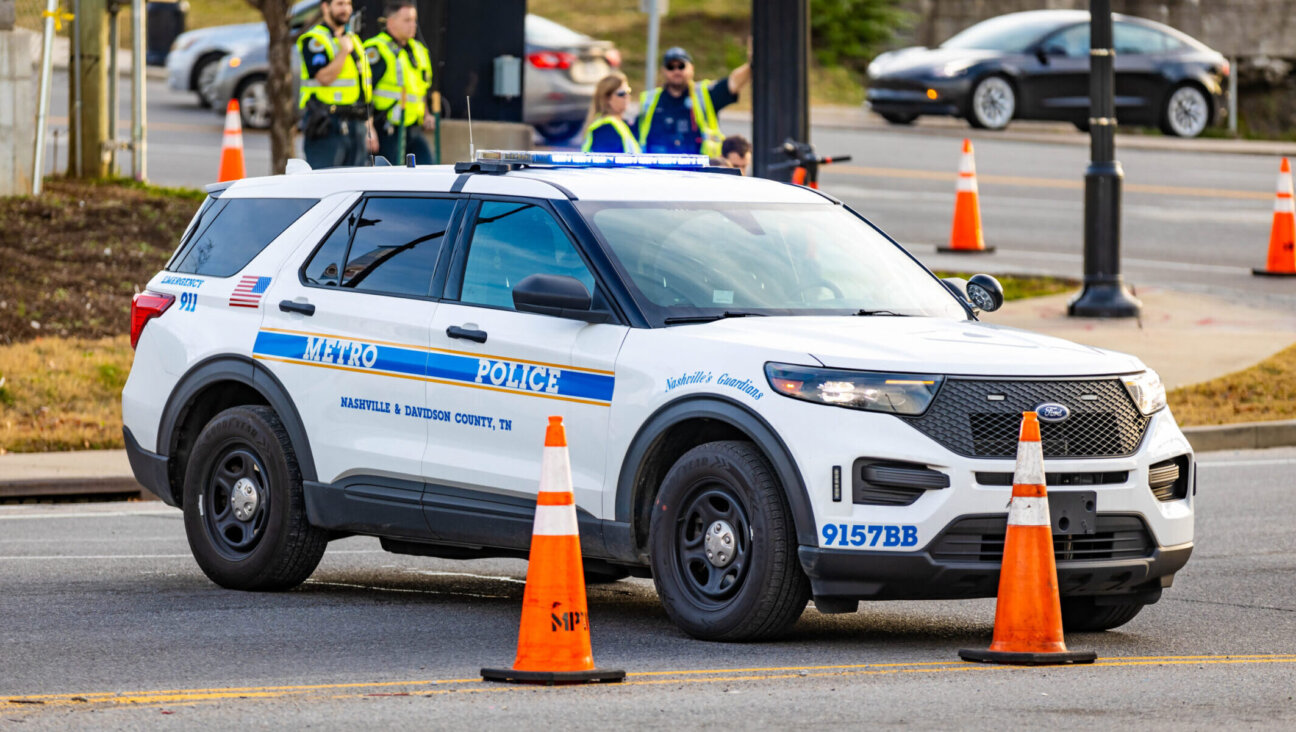7 Jewish things about the courthouse where jurors deliberated Donald Trump’s fate
What’s so Jewish about 100 Centre St.? Plenty, including its architect, a mysterious shofar and Trump invoking Soros

Former U.S. President Donald Trump leaves the courthouse at the end of the day of his trial for allegedly covering up hush money payments linked to extramarital affairs, on May 9, 2024. Photo by Charly Triballeau/AFP via Getty Images
What’s so Jewish about 100 Centre St., the Manhattan courthouse where jurors deliberated Donald Trump’s fate and found him guilty Thursday?
Plenty, starting with the architect who designed it, a mysterious shofar and Trump’s claim that a famous Jewish billionaire was behind the case.
Here are seven Jewish connections to the Manhattan Criminal Courthouse where Trump was convicted of falsifying business records to cover up hush-money payments in order to influence the 2016 presidential election.

1) Proclaiming his innocence outside the courtroom after the verdict was announced, Trump blamed “a Soros-backed D.A.,” suggesting that Manhattan District Attorney Alvin Bragg brought the case at the behest of billionaire George Soros.
Soros, a liberal Jewish philanthropist, is frequently accused by antisemites and the right wing of being a puppet-master for left-wing causes. The Washington Post reported that Soros never made any contributions to Bragg’s election campaign, though Soros’ son and daughter-in-law did. Soros also gave $1 million to Color of Change, a progressive organization that supported Bragg.
The Jewish Council of Public Affairs blasted Trump’s comment, calling it an “antisemitic, racist and bigoted” attack designed to “sow distrust in the justice system” and “undercut our democracy.”
2) The 17-story courthouse was designed by two architects, Wiley Corbett and Charles B. Meyers. Meyers was a renowned Jewish architect whose work included Congregation Rodeph Sholom, on the Upper West Side, to which he belonged; Congregation Ohab Zedek, also on the Upper West Side, and Zysman Hall, the main building at Yeshiva University, known for its Byzantine-inspired copper-domed towers and turrets. The four towers at 100 Centre St. are not quite so lovely: The New York Post once described the complex as a “grimy, granite” building.
3) Sidney Lumet created a TV series called 100 Centre St. in which Alan Arkin played a Jewish judge. The show aired on A&E from 2001 to 2002 and has been compared to Law & Order. Lumet’s parents acted in Yiddish theater and he made his stage debut as a child at the Yiddish Art Theatre.
4) Among the many famous defendants who’ve appeared at 100 Centre St. are comedian Lenny Bruce, brought up on obscenity charges in 1964, and Harvey Weinstein, whose 2020 conviction on rape and sexual assault was recently overturned.

5) The city’s longest-serving district attorney, Robert Morgenthau, worked out of 100 Centre St. for 35 years until his retirement in 2009. Morgenthau’s office handled many notorious cases, including Mark David Chapman’s murder of John Lennon, the Brooklyn Bridge shooting of Lubavitcher teenager Ari Halberstam, the prosecution of mob boss John Gotti, and the rape of a Central Park jogger that led to the wrongful convictions of five Black and Latino teenagers. The Central Park convictions were later overturned. Morgenthau’s legacy also included standing up to the Museum of Modern Art and billionaire Ronald Lauder in a fight over a Nazi-looted artwork, Portrait of Wally. That case ultimately changed the way survivor claims to art seized in the Nazi era are handled.
6) Michael Cohen, who testified about payments he made to stripper Stormy Daniels to keep her story about having sex with Trump a secret, claimed that he used Yom Kippur as an excuse, at Trump’s behest, for delaying one of those payments to Daniels’ lawyer.
7) The raucous scene outside the courthouse has included a shofar blown by an evangelist from California named Angie. The Financial Times noted that a passerby referred to the shofar as a “Jew horn,” and quoted Angie citing the battle of Jericho as her inspiration: “The Bible says they blew the trumpets, they shouted, and the walls came down.”
A message from our Publisher & CEO Rachel Fishman Feddersen

I hope you appreciated this article. Before you go, I’d like to ask you to please support the Forward’s award-winning, nonprofit journalism so that we can be prepared for whatever news 2025 brings.
At a time when other newsrooms are closing or cutting back, the Forward has removed its paywall and invested additional resources to report on the ground from Israel and around the U.S. on the impact of the war, rising antisemitism and polarized discourse.
Readers like you make it all possible. Support our work by becoming a Forward Member and connect with our journalism and your community.
— Rachel Fishman Feddersen, Publisher and CEO























